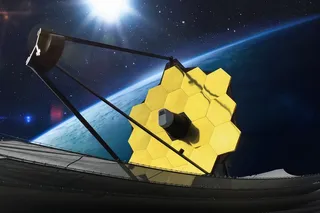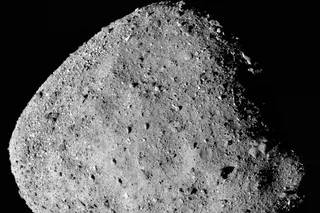More often than not, private sector attempts to visit the moon so far have resulted in a failure to land. Intuitive Machines experienced its second moon setback in March 2025. Its lander, Athena was off target by about 800 feet, touched down in a crater, then tipped over. It snapped and sent some photographs and activated a few experiments before going silent about 24 hours later.
About a week earlier, Texas aerospace company Firefly Aerospace celebrated the first successful lunar landing when its spacecraft Blue Ghost touched down. A Japanese company’s lander shared a ride on the same rocket that took Blue Ghost to space, but it is taking a longer route to the moon and hasn’t arrived yet. So why is it so hard to land on the moon and historically, what have been the successes and failures?
Read More: First-Ever Private Lunar Lander Successfully Reaches the Moon’s Surface
Private Landings on the Moon
During a press conference, the Firefly Aerospace's CEO Steve Altemus called the recent attempt "a success" for commercial space exploration, because the lander was delivered by a private SpaceX rocket. He noted that the lander was able to transmit some data.
“Our targeted landing site near the lunar South Pole is one of the most scientifically interesting, and geographically challenging locations, on the Moon,” Nicky Fox, a NASA administrator said in a press release. “Each success and setback are opportunities to learn and grow, and we will use this lesson to propel our efforts to advance science, exploration, and commercial development as we get ready for human exploration of Mars.”
This was the second landing attempt for Intuitive Machines. The first, a year ago, resulted in the lander breaking a leg and tipping over.
Lunar Exploration History
Private lunar landings are a relatively recent phenomenon, with an Israeli company making the first attempt in 2019. It’s worth considering that government-sponsored moon missions have also had a checkered past.
The race to the moon started in 1958, with the U.S.’s Pioneer 0 unable to achieve orbit. The U.S. and USSR traded seven unsuccessful attempts to either orbit or crash-land an unmanned vehicle onto the moon’s surface. In January 1959, the USSR’s Luna 1 achieved partial success, with a flyby; the U.S.’s Pioneer 4 accomplished the same thing three months later. That fall, the USSR’s Luna 2 was the first spacecraft to impact the moon’s surface. A few months later, Luna 3 snapped a picture of the moon’s far side. The U.S. that year was unable to match those achievements.
The early ‘60s saw over a dozen unsuccessful attempts by the U.S. and USSR to best either’s accomplishments, before Apollo 11’s first successful human landing. The ‘70s saw a near-equal amount of success and failure by the two countries to collect and retrieve lunar samples. The’80s saw no lunar activity. The ’90s delivered three successful missions — two by the U.S., and one by Japan. Europe, India, and China joined in the lunar quest in the 2000s.
With scientific funding shifting from public to private, it’s only a matter of time before more commercial missions will see success in both launching to and landing on the moon.
Article Sources
Our writers at Discovermagazine.com use peer-reviewed studies and high-quality sources for our articles, and our editors review for scientific accuracy and editorial standards. Review the sources used below for this article:
NASA. Moon Missions














